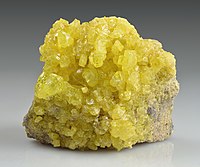
Photo from wikipedia
Endoscopic transpapillary procedure, so-called ERCP-related procedure, should be considered as the first-line treatment method for biliary disorders such as acute cholangitis, obstructive jaundice, or choledocholithiasis because of its less invasiveness… Click to show full abstract
Endoscopic transpapillary procedure, so-called ERCP-related procedure, should be considered as the first-line treatment method for biliary disorders such as acute cholangitis, obstructive jaundice, or choledocholithiasis because of its less invasiveness and lower risk of adverse events than other techniques despite the risk of post-ERCP pancreatitis.[1,2,3,4,5] However, ERCP-related procedure is not always successfully accomplished, even when performed by skilled endoscopists, in cases of inability of selective biliary cannulation because of the presence of intradiverticular papillae, a long narrow distal segment of the distal bile duct, or inaccessible papilla because of gastric outlet obstruction or surgically altered anatomy (SAA) even using balloon enteroscope.[6,7] Recently, in such cases, EUS-guided biliary drainage (EUS-BD) approach has been developed and reported as a novel useful alternative technique when standard ERCP-related procedure has failed.[8,9,10,11,12,13,14] As regards EUS-BD for obstructive jaundice due to malignant biliary stricture, EUS-BD is divided into several techniques depending on the approach route.[15] At present, there is no universal consensus on the optimal strategy for which the EUS-BD technique should be selected. Thus far, the selection of the EUS-BD approach depends on the patient's condition, which may involve the presence of gastric outlet obstruction, the site of biliary obstruction, the anastomosis after surgical intervention, or the preference of the endoscopist.[16] In several EUS-BD techniques, EUS-guided choledochoduodenostomy (EUS-CDS) and EUS-guided hepaticogastrostomy (EUS-HGS) are common mostly in patients with malignant diseases at the end stage of disease because these techniques are simple. However, bile flow in EUS-CDS or EUS-HGS is not physiological, resulting in short stent patency rather than retrograde biliary metal stent placement across the stricture site by ERCP. Furthermore, as there are as yet no commercially available dedicated metal stents for EUS-CDS or EUS-HGS around the world, a braided-type covered metal stent is conventionally used on EUS-CDS or EUS-HGS, which has some concern about stent misplacement or migration due to its high shortening rate.[17] Therefore, EUS-guided antegrade stenting (EUS-AGS) has been developed and reported as a useful option of EUS-BD because of the theoretical physiological bile flow in patients with inaccessible ampulla.[18] Moreover, EUS-antegrade intervention (EUS-AI) for benign biliary diseases in patients with surgically altered anatomy that is an antegrade treatment via the approach route created by EUS-HGS has been developed by application of EUS-AGS.[19] Herein, we describe technical details regarding such EUS-guided antegrade procedure for malignant and benign biliary diseases.
Journal Title: Endoscopic Ultrasound
Year Published: 2019
Link to full text (if available)
Share on Social Media: Sign Up to like & get
recommendations!